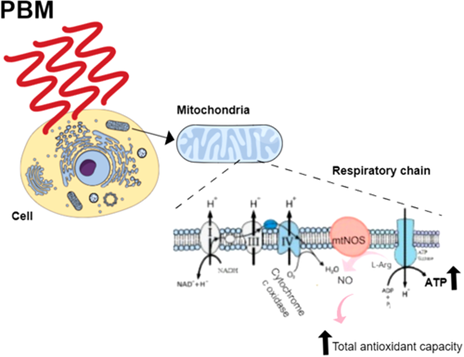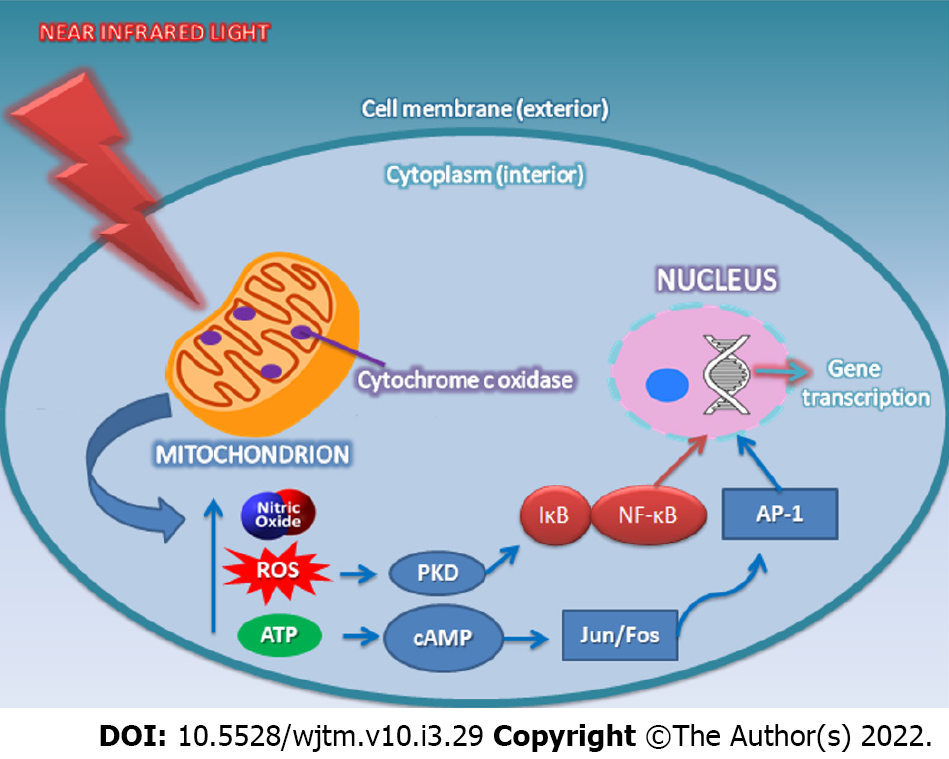Photobiomodulation Can Be Fun For Everyone
Wiki Article
A Biased View of Photobiomodulation
Table of ContentsSome Ideas on Photobiomodulation You Should KnowThe 2-Minute Rule for PhotobiomodulationThe Only Guide for PhotobiomodulationThe smart Trick of Photobiomodulation That Nobody is Discussing
Laser treatment is a clinical treatment that makes use of concentrated light to stimulate a procedure called. During PBM, photons enter the cells and connect with the cytochrome c complicated within mitochondria. This communication causes a biological waterfall of events that leads to a rise in cellular metabolism, which can as well as speed up the recovery procedure.There is consensus that the application of a restorative dose of light to impaired or dysfunctional tissue causes a cellular response mediated by mitochondrial systems. Photobiomodulation. Studies have actually revealed that these modifications can influence discomfort and swelling, as well as, cells fixing
Changes in ATP, responsive oxygen species and nitric oxide adhere to light absorption by Cc, O. These results are redox state and dose reliant. In hypoxic or otherwise worried cells it has actually been shown sometimes that complying with, nitric oxide is launched, ATP is boosted and oxidative stress is lowered [27-31]

A Biased View of Photobiomodulation
PBM tools have been removed for advertising and marketing by FDA via the Premarket Notification/510( k) procedure as adjunctive devices for the short-lived relief of discomfort. These clearances were based on the discussion of scientific data to sustain such cases (Photobiomodulation). In this treatment, a source of light is positioned near or in call with the skin, allowing the light energy (photons) to penetrate cells where it engages with chromophores situated in cells leading to photophysical and photochemical modifications that lead to alterations at the molecular, mobile and tissue degrees of the bodyInterestingly, recent study indicates that light can boost performance in normal tissues and cells. The prospective applications of PBMT are numerous and are being explored experimentally at the basic science, pre-clinical and professional level. The current scientific usages are for the relief of discomfort and swelling and the treatment of sporting activities injuries.

The treatment criteria and number of sessions required for PBMT are reliant upon location and reason. PBMT usually calls for even more than one therapy for ideal discomfort relief.
Get This Report about Photobiomodulation
Therapy criteria for PBMT were originally established making use of cells in vitro and in small animal designs. These therapy parameters normally had a reduced irradiance and fluence and functioned well for Full Report cutaneous applications. When medical professionals started to make use of PBMT to deal with frameworks that were situated much deeper in the body, they made use of these criteria with negative results.
We currently comprehend that these negative studies was because of inaccurate device and treatment criteria for transcutaneous therapy of much deeper frameworks. Recent developments in laser treatment gadgets and even important site more research study right into the proper does have substantially improved the results of PBMT. For treating deep cells, the wavelength of light made use of establishes the deepness of infiltration into a tissue.
It is vital that a clinician uses the suitable wavelength of light and criteria to deal with a problem. One wavelength and one set of therapy criteria will certainly not be efficient for all problems. Adverse side results have not been reported from the usage of PBMT.
A Biased View of Photobiomodulation
In the initial experiment, Dr. Endre Mester, used shaved rats and observing exactly how the laser Source influenced their ability to grow hair contrasted to the team that was not obtaining LLLT. He found that the team of mice receiving LLLT were able to expand their hair back faster than the group of mice that didn't get LLLT (Hoon C, et alia; 2012).This therapy is termed this means to set apart the difference between the lasers some professions make use of to reduce (eg. Low-level light therapy is pain-free, non-invasive therapy.
LLLT has a biphasic response, indicating that lower dosages are usually seen to be more beneficial than higher dosages. That being stated, dosages greater or less than the ideal dose does not affect (Hoon C, et al; 2012). Because of this, it can be tough to have researches on LLLT with numerous criteria.
Some business combined the two (LED and laser) to give an extra all-round treatment because lasers can penetrate much deeper than LED and infrared light (Norman Doidge, The Brain's Means of Recovery, 2015). During therapy, the area that is being treated is revealed to LED light from a Bio, Flex Laser, which goes to 660 nm wavelength, complied with by infrared light at 830-840 nm wavelength.
Report this wiki page